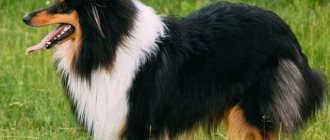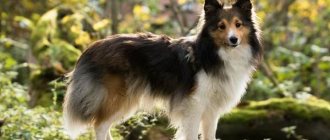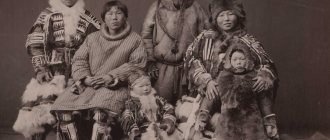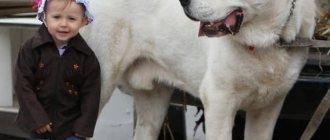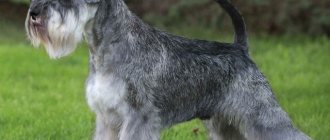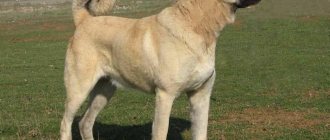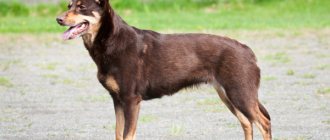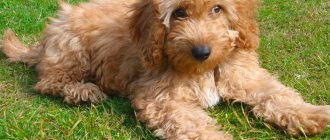| Adaptability |
| Shedding level |
| Level of tenderness |
| Need for exercise |
| Social need |
| Apartment ratio |
| Grooming |
| Friendliness in an unfamiliar environment |
| Tendency to bark |
| Health issues |
| Territoriality |
| Friendly to cats |
| Intelligence |
| Education and training |
| Child Friendly |
| Game activity |
| Observation |
| Friendly to other dogs |
What is the difference between Collies and small Shelties? Main differences and minor ones
Dogs of the Collie (Scottish Sheepdog) and Sheltie (Shetland Sheepdog) breeds are very similar in appearance, so they are often confused, mistaking the Sheltie for a mini copy of the Collie.
Or, because Shelties are smaller in size, they are sometimes mistaken for Collie puppies. Yes, indeed, there are breeds that have mini-varieties. They differ only in size. For example, Dachshunds and Mini Dachshunds, Maltese and Mini Maltese. But this in no way applies to Sheltie and Collie. These are two different independent breeds . They differ not only in size, but also in a number of other characteristics, which we will discuss in this article.
Common diseases
Thanks to their strong immunity and great mobility, Shelties rarely get sick. However, sometimes you still have to visit veterinarians.
The first signs of disease in nimble representatives of the breed are immediately noticeable: Sleeps for a long time and eats poorly. See a doctor immediately if the dog is not frolicking and is not interested in its surroundings.
What diseases is this breed susceptible to?
- Eye diseases - cataracts, corneal dystrophy. After being examined by an ophthalmologist, if diagnosed early, the dog will recover. If a retinal detachment occurs, the dog may go blind.
- Hearing problems are rare, unless it is a congenital disorder.
- Skin diseases. Due to skin sensitivity, dermatitis and dermatomyositis may occur. Even a small wound that is not treated promptly can cause a serious illness.
- Joints. The problem with this breed is rapid wear of joints and dislocations. Often this can only be corrected with surgery. Be careful when walking, there are no genetic problems, and the dog will not suffer from joint pain.
Vaccinations and visits to the veterinarian will protect your miniature pet from disease.
Origin
No matter how paradoxical it may sound, it is the different origins that explain both the similarities and differences between these breeds.
The Collie's homeland is on the border of Northern England and Scotland. Initially, it was a herding dog adapted for working needs - strong, squat, with warm, shaggy hair, allowing it to survive outdoors in a rather harsh climate.
Subsequently, breeders worked significantly with the breed, adding the blood of Scottish and Irish Setters, Greyhounds and other breeds. Thanks to them, Collie not only became more resilient, but also acquired an aristocratic appearance.
The Sheltie was also originally a herding dog, the only difference being that it originated from the Shetland Islands. Her ancestors were small dogs similar to Spitz. They owe their modern appearance to crossings with King Charles Spaniels, Spitz, Papillon, Schipperke and Collie.
The Sheltie inherited its appearance from the Scottish Shepherds . Thanks to this, they are so similar in appearance. But other breeds influenced the character and temperament of Shetland Sheepdogs, making them different from Collies.
How to feed a Sheltie
As is the case with other breeds, Sheltie can be fed both natural food and industrial feed. In the second case, you should choose premium and super-premium diets from lines suitable for small breeds.
If the owner decides to feed the dog “natural” food, then 50% of the diet should consist of meat products - beef, veal, turkey, rabbit, lean lamb and offal. Pork and liver are undesirable. The meat is given raw, previously scalded with boiling water; the offal must be boiled.
Porridges are also good for dogs - rice, buckwheat, oatmeal are well boiled in broths - meat, fish, vegetables. It is recommended to season the dish with vegetable oil, and also add chopped fresh herbs - a source of vitamins. Shelties must be given fresh chicken or quail yolks - 2-3 times a week, but both yolk and white can be given boiled.
In general, shelties love to eat, so you can give them fresh fruits, berries, and vegetables, which most of these pets eat with pleasure. You can also cook vegetable stew and other dishes. Milk is not recommended for adult dogs, but fermented milk products must be present in the diet. Dried fruits can be an excellent treat for Shelties. Considering the cute appearance of dogs, it is worth excluding situations when they are treated from the table, if not by the owners themselves, then by “compassionate” guests.
Difference in size and appearance
- The main, glaring difference in the photo is the size of the dogs. According to breed standards, for a Scottish Sheepdog the height at the withers should be between 51-61 cm, and for a Sheltie - 33-39 cm.
- The second important difference lies in color - three standard coat colors are acceptable for Collies, while Shelties have five.
- In addition, these dogs have different head shapes - the Scottish Sheepdog is narrower and longer at the base, while the Shetland Sheepdog is shorter and wider, and also has a more defined transition from the forehead to the muzzle.
- Compared to the Collie, the Sheltie's ears are wider at the base and set closer together, and her eyes are larger relative to the size of her head.
What is the difference between intelligence
Both of these breeds are highly intelligent dogs. They are easy to train and can learn many commands without being stubborn.
Both of these breeds are emotionally very attached to their owners and try to please them, anticipating their desires . It is not difficult for them to adapt to the lifestyle of their owner. Both Collie and Sheltie are great with children, acting as a nanny. They generally have no desire to dominate. They do not strive to show “who’s boss.” However, these intellectuals of the dog world, if necessary, are able to act independently, choosing the right decision.
Interesting Facts
Interesting facts about this breed will help you get to know the Sheltie better:
- The popularity of mini collies has played a cruel joke on the quality of the breed lines. Unscrupulous breeders use all individuals for breeding, regardless of the quality of fur, compliance with standards and health status.
- Little collies are one of the smartest animals in the world. Canadian psychologist Stanley Corren found that dwarf collies recognize not only human gestures and voices, but also facial expressions.
- Due to the development of their intelligence, these dogs are too stubborn and require specialized training.
- Shelties bark frequently and loudly. Moreover, they make a whole range of sounds, each of which carries an information load.
Differences in Temperament
Both Scottish and Shetland Sheepdogs have a cheerful and cheerful disposition. They absolutely cannot tolerate cruel treatment or physical punishment . It is much more effective to reprimand the dog; moral punishment will work faster.
The difference is that the Collie is calmer and more reasonable. And the little Sheltie is more active and energetic. And if on the street dogs of both breeds will happily run around the lawn, then at home Collie prefers to lie quietly on the sidelines, not far from the owner. If the owner goes, for example, to another room, then Collie will first assess the situation. And if he realizes that the owner has been gone for a long time, he will move to another room after him. The Sheltie will follow on your heels. This “energizer” is in perpetual motion, the main thing for him is not to be separated from his beloved owner for a second.
Both of these breeds are not guard dogs. However, the Sheltie's protective instinct is more developed. If any stranger invades, she will try to expel him from her territory. Although due to its size it cannot serve as a strong opponent. Collie will not waste energy. But, although it is not an aggressive breed, if necessary, it will be able to protect property and family members thanks to its ingenuity, natural intelligence, as well as its mass and dimensions.
General impression
When looking at a dog, a feeling of harmony should be created.
The lines of the body, limbs, and head are noble and neat. Even in a calm state, the image should look wary, but without nervousness. The head has noble narrow features and is proportional to the body. The cheekbones are pronounced, the muzzle tapers from the ears to the tip of the nose. Nose and lips are black.
The eyes are beautiful, medium size, almond-shaped. The color is dark brown or blue.
The ears are small, triangular, and set close together. When at rest they are slightly tilted back, when alert they are directed forward.
The tail is set low, richly coated, slightly curved upward, but not curled.
The dog's movements are flexible and graceful. Developed muscles and a strong build allow them to overcome high obstacles and move quickly. Shelties are very active and love to play. With good nutrition and care, dogs live 12–15 years.
Care and maintenance
Initially, both of these breeds served as herding dogs. During selection, Shetland Sheepdogs lost their skills, and Collies are still in demand in some countries as sheep shepherds.
Long thick hair allows these dogs to live in the yard . In some private houses, outdoor enclosures are specially arranged for them. But most often they are kept at home, especially Shelties, since their size makes them easier to place in an apartment.
Both breeds are undemanding in care and feeding. Only their fur requires special attention. But this does not mean that they need to be combed daily, and you don’t need to bathe them often.
Tips for choosing a puppy
In recent years, Sheltie puppies have become a very popular “commodity”, but with fame, the risks of deception have also increased. We are talking about non-pedigreed dogs that are passed off as purebreds for profit. If you are open-minded about the breed, there are thousands of dogs in shelters waiting for you, but if you are going to spend the money, you should get “quality.”
We recommend that you choose a Sheltie puppy from a kennel whose activities are controlled by large canine organizations. You may be confused by the price, but kennels also sell pet-class puppies (not for exhibitions). When buying a pet from a breeder, you can count on a stable psyche and good health of the ward... when buying a puppy from your own hands, you get a “pig in a poke.”
Purebred puppies have a package of documents, the so-called puppy certificate, and a veterinary passport. In addition, Shelties are prone to a number of hereditary diseases , for which producers are screened. For example, the gene for dwarfism or eye abnormality in collies is transmitted exclusively by inheritance.
Be vigilant and treat the purchase of a puppy with all the composure that you are capable of. If you have no experience, ask for help! Almost every kennel club has breed experts who (for a fee) will help you weed out dubious options.
Note! Raising and raising a puppy of any breed requires specific knowledge and experience, and reputable breeders are always ready to help the new owner.
Breeding
Small Shetland Sheepdog puppies develop much faster than Collie puppies. They finish their growth earlier, becoming adult dogs. Therefore, Sheltie bitches are ready for mating by the age of 15 months, while in Scottish Shepherds the first mating occurs no earlier than 18 months. Collies usually have 6-8 puppies in a litter (no more than 11), while Shelties usually have 4-5 puppies (no more than 7). The price for puppies of these breeds is approximately the same.
Scottish Sheepdog puppies are characterized by stable growth. With proper care, there are rarely undergrowth or overgrowth. The growth of Shetland Sheepdog puppies is unstable, and therefore there are cases when puppies grow with size deviations from the breed standard, both larger and smaller. Therefore, when selecting a pair, it is necessary to consult with breeders who have experience in breeding Shelties.
CHARACTER
The reputation of an excellent companion dog is well deserved; Shelties are very smart, playful, easy to train and love their owners. They are famous for their loyalty, but they are wary of strangers. With sufficient socialization, this can be corrected, especially if it starts at an early age.
Since these are herding dogs, their behavior is characteristic. They are active, love to look after and manage, are smart and are able to make independent decisions. If you do not give an outlet for energy, the dog will become bored and this will lead to destructive behavior or barking. Fortunately, with regular walks, games and activity, the dog is a completely calm and peaceful dog.
Considering that she is active and smart, there are a lot of ways to keep her busy. This includes agility and offense, frisbee, training of various types. In general, everything is limited only by the owner’s imagination.
The author of the book “Dog Intelligence,” Stanley Coren, considers the Sheltie one of the smartest dog breeds, ranking 6th among all the breeds studied (and there are 132 of them). She learns a command in 5 repetitions, and executes it 95% or more of the time. Naturally, with such data, training her is a pleasant and exciting task.
As for relationships with children, the Sheltie loves children and playing with them. But, as with any breed, playtime needs to be supervised to ensure the dog doesn't end up in a situation where he needs to defend himself.
Collie: a brief description of the breed
The collie's ancestors were greyhounds, setters and Labradors, so they gave her special character traits. The animal is distinguished by its wit, ability to adapt to living conditions, ability to eat fresh food and high-quality dry food.
From greyhound collies they got an elongated and narrowed muzzle, which distinguishes it from other purebred dogs. This is a pet that can protect the owner during an emergency. The ancestors of the collie originated in the area between Northern England and Scotland, where they were used as a herding dog. She can do work and live outside because she is shaggy, stocky and powerful.
Price
Today, there are nurseries for cute shepherd dogs in almost every capital of the CIS - Kyiv, Moscow, Minsk, etc. In Russia they are very loved and pampered.
Also, anyone can purchase a pedigree for an animal. The Sheltie price for 2022 ranges from 20 to 35 thousand rubles. Low-breed dogs from private breeders are sold cheaper, about 15 thousand rubles.
Similarities and differences between breeds
Although collie and sheltie are representatives of different breeds, their appearance is almost similar, they differ in intelligence. The main difference between a collie and a sheltie is related to their character traits, since the fluffy shepherd dogs look almost identical. Smooth Collies have a short but dense coat, so they do not look like Shelties. Collies and Shelties can be easily distinguished by:
- head structure;
- dimensions;
- I'll put my ears up;
- eye size;
- the exterior of the hind and forelimbs.
